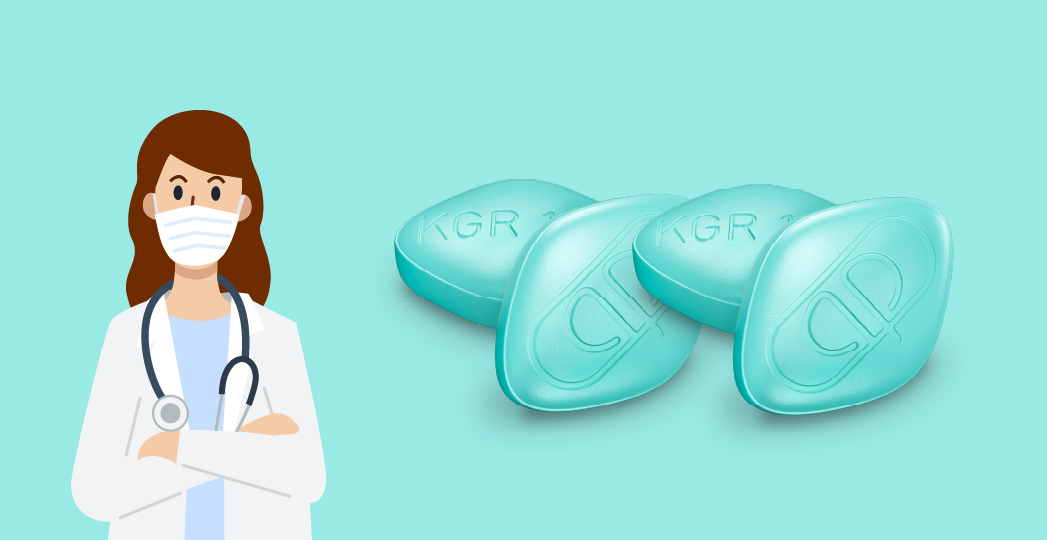Viagra vs Kamagra: Which ED Medication Offers the Best Results for Men?

In the world of erectile dysfunction (ED) medication, two popular options stand out: Viagra and Kamagra. Both are widely used and have been proven effective in helping men achieve and maintain erections. But how do they compare? In this article, we will delve into the differences between Viagra and Kamagra, exploring their effects, side effects, and efficacy. By the end, you’ll have a better understanding of which medication may be the right choice for you.
What is the difference between Viagra and Kamagra?
Viagra and Kamagra are both medications used to treat erectile dysfunction (ED). While they have similar effects, there are some differences between the two drugs.
The main difference lies in their active ingredients. Viagra contains the active ingredient sildenafil citrate, whereas Kamagra contains sildenafil citrate or a similar compound called sildenafil. Both medications work by increasing blood flow to the penis, resulting in improved erections.
Viagra was the first medication approved by the FDA for the treatment of ED. It has a long-standing track record and is widely recognized for its effectiveness. On the other hand, Kamagra is a generic version of Viagra and is not approved by the FDA. It is manufactured by different pharmaceutical companies, often located outside of the United States.
Another difference between Viagra and Kamagra is their availability. Viagra is available only with a prescription, while Kamagra can often be purchased without a prescription. This means that Kamagra may be more easily accessible to individuals who do not have a prescription or prefer to purchase medication online.
When it comes to safety and quality, Viagra has undergone rigorous testing and has been proven to be safe and effective when used as directed. Kamagra, on the other hand, may not have undergone the same level of testing and may vary in quality depending on the manufacturer.
It is important to note that both Viagra and Kamagra can have side effects, such as headaches, flushing, indigestion, and changes in vision. These side effects are usually mild and temporary, but it is always recommended to consult with a healthcare professional before starting any medication.
Which medication is more effective?
In terms of effectiveness, Viagra and Kamagra have been shown to have similar results in treating erectile dysfunction. Both medications work by inhibiting an enzyme called phosphodiesterase type 5 (PDE5), which allows for increased blood flow to the penis. This increased blood flow helps men achieve and maintain erections.
However, because Kamagra is a generic version of Viagra, there may be some variability in its effectiveness. Generic medications are required to have the same active ingredients as their brand-name counterparts, but the manufacturing processes and quality control may differ. This means that the efficacy of Kamagra can depend on the specific manufacturer and the quality of their product.
It is worth noting that individual experiences may vary when it comes to the effectiveness of these medications. What works well for one person may not work as effectively for another. It may be necessary to try both Viagra and Kamagra to determine which medication works best for you.
How does Kamagra compare to Viagra in terms of effectiveness?
Kamagra and Viagra are both medications used to treat erectile dysfunction (ED), but they differ in several aspects. When comparing their effectiveness, it is crucial to consider various factors, including the active ingredient, dosage, bioavailability, and individual response.
Both Kamagra and Viagra contain the same active ingredient called sildenafil citrate. Sildenafil citrate is a phosphodiesterase type 5 inhibitor, which helps increase blood flow to the penis, resulting in improved erections. Therefore, the effectiveness of Kamagra and Viagra in treating ED is generally similar.
However, it is important to note that Kamagra is a generic version of Viagra, meaning it is not produced by the original manufacturer. Generic medications are required to have the same active ingredient as the brand-name drug and must meet strict quality standards set by regulatory authorities. Therefore, in terms of effectiveness, Kamagra can be considered a viable alternative to Viagra.
Dosage is another factor to consider when comparing the effectiveness of Kamagra and Viagra. Viagra is available in various strengths, including 25mg, 50mg, and 100mg tablets. Kamagra, on the other hand, is available in a wider range of dosages, including 25mg, 50mg, and 100mg tablets, as well as oral jelly and effervescent tablets. The dosage prescribed by a healthcare professional will depend on the individual’s specific needs and response to the medication.
What are the side effects of taking Viagra or Kamagra?
Viagra and Kamagra are popular medications used to treat erectile dysfunction (ED) in men. While these drugs have proven to be highly effective, it is important to be aware of their potential side effects. This blog post aims to provide a comprehensive overview of the known side effects associated with Viagra and Kamagra.
1. Common Side Effects:
Both Viagra and Kamagra share common side effects, which typically occur in less than 10% of users. These common side effects may include:
a. Headache: A mild to moderate headache is the most commonly reported side effect of these medications. It is typically transient and subsides within a few hours.
b. Facial flushing: Some individuals may experience a flushed or warm sensation in their face, neck, or chest. This is a temporary side effect caused by increased blood flow.
c. Nasal congestion: A stuffy or runny nose is another frequent side effect, occurring due to the widening of blood vessels.
d. Indigestion: Digestive disturbances like indigestion, heartburn, or an upset stomach may occur. Taking the medication with food can help mitigate this side effect.
2. Less Common Side Effects:
While less common, the following side effects have been reported by a small proportion of users:
a. Visual disturbances: Viagra and Kamagra may cause temporary changes in vision, such as altered color perception or blurred vision. If this occurs, it is advisableto seek medical attention immediately.
b. Dizziness: Some individuals may experience dizziness or lightheadedness while taking these medications. It is important to avoid activities that require mental alertness, such as driving or operating heavy machinery, if these side effects occur.
c. Back pain: Back pain has been reported by a small number of users. It is usually mild and resolves on its own.
d. Muscle aches: Some individuals may experience muscle aches or pain, which is typically mild and transient.
e. Priapism: Priapism is a rare but serious side effect characterized by a prolonged and painful erection that lasts for more than four hours. If this occurs, immediate medical attention is necessary to avoid permanent damage to the penis.
3. Precautions and Interactions:
It is important to note that Viagra and Kamagra may interact with certain medications or medical conditions. It is essential to inform your healthcare provider about any existing medical conditions or medications you are currently taking before starting treatment with these medications. This will help ensure that there are no potential drug interactions or contraindications that could increase the risk of side effects.
Are there any long-term health risks associated with taking Viagra or Kamagra?
Viagra and Kamagra are popular medications used to treat erectile dysfunction (ED), providing many men with increased sexual confidence and enjoyment. While these medications have proven to be effective in the short term, concerns have been raised regarding their potential long-term health risks. In this blog post, we will delve into the available evidence and discuss any potential long-term health risks associated with taking Viagra or Kamagra.
Understanding Viagra and Kamagra:
Viagra and Kamagra are both phosphodiesterase type 5 (PDE5) inhibitors, which work by relaxing the blood vessels and increasing blood flow to the penis, thus facilitating erections. They are commonly prescribed by healthcare professionals to address the symptoms of ED.
Examining Long-Term Health Risks:
1. Cardiovascular Effects:
– Some studies suggest a potential link between prolonged use of PDE5 inhibitors and cardiovascular events such as heart attacks and strokes.
– However, these risks appear to be more prevalent in individuals with pre-existing cardiovascular conditions, such as hypertension or heart disease.
– It is crucial to consult with a healthcare professional before taking these medications, especially if you have a history of cardiovascular issues.
2. Vision Changes:
– Rare cases of visual disturbances, including blurred vision, sensitivity to light, and changes in color perception, have been reported with PDE5 inhibitors.
– However, these cases are infrequent, and the risk of vision changes is generally considered to be low.
3. Hearing Loss:
– There have been rare reports of sudden hearing loss associated with PDE5 inhibitors.
– However, the evidence is limited and the causal relationship is still unclear.
4. Priapism:
– Priapism, a prolonged and painful erection lasting longer than 4 hours, is a potential complication of PDE5 inhibitors.
– While rare, it is considered a medical emergency and requires immediate medical attention to prevent permanent damage to the penis.
5. Other Side Effects:
– Like any medication, Viagra and Kamagra can cause a range of side effects, including headaches, flushing, indigestion, and nasal congestion.
– These side effects are generally mild and temporary, but if they persist or worsen, it is important to seek medical advice.

Are there any interactions between Viagra and Kamagra?
As a professional in the medical field, I can provide you with reliable information regarding the potential interactions between Viagra and Kamagra. Both Viagra and Kamagra are medications used to treat erectile dysfunction, and they belong to the same class of drugs called phosphodiesterase type 5 (PDE5) inhibitors.
While Viagra and Kamagra contain the same active ingredient, sildenafil citrate, they may have slight differences in their formulations and manufacturing processes. These subtle differences may affect how the medications are metabolized and how they interact with other substances.
It is important to note that combining two PDE5 inhibitors like Viagra and Kamagra can increase the risk of side effects and adverse reactions. These medications work in a similar manner by increasing blood flow to the penis, and using both simultaneously can potentially lead to an excessive increase in blood pressure. This may result in dizziness, lightheadedness, flushing, and in rare cases, more serious cardiovascular events.
Furthermore, both Viagra and Kamagra can interact with certain medications that are commonly used to treat heart conditions, such as nitrates (e.g., nitroglycerin), alpha-blockers (e.g., doxazosin), and certain antihypertensive drugs. These interactions can cause a sudden drop in blood pressure, which can be dangerous, especially for individuals with underlying cardiovascular conditions.
Is there a preferred dosage for taking Viagra or Kamagra?
When it comes to the use of medications such as Viagra or Kamagra, it is important to follow the recommended dosage guidelines to ensure safety and effectiveness. While both drugs are used to treat erectile dysfunction (ED), they have different active ingredients and dosing recommendations.
Viagra, also known by its generic name sildenafil citrate, is typically available in three dosage strengths: 25mg, 50mg, and 100mg. The recommended starting dose for most men is 50mg, taken approximately one hour before sexual activity. Depending on individual response and tolerability, the dose may be increased to 100mg or decreased to 25mg. It is crucial to consult with a healthcare professional to determine the appropriate dose for your specific needs. It is important to note that the maximum recommended dosage of Viagra is 100mg per day.
Kamagra, on the other hand, is a generic version of Viagra and contains the same active ingredient, sildenafil citrate. It is important to note that Kamagra is not approved by the FDA and may not be regulated or manufactured to the same standards as Viagra. Therefore, it is advisable to consult a healthcare professional before considering the use of Kamagra or any other generic version of Viagra.
In conclusion
It is important to approach the use of medications such as Viagra and Kamagra with caution and under the guidance of a healthcare professional. Both drugs can be effective in treating erectile dysfunction, but they come with potential risks and interactions. It is crucial to follow the recommended dosage guidelines and avoid combining these medications with certain drugs, especially those used to treat heart conditions. Additionally, it is advisable to stick to FDA-approved medications like Viagra, as generic versions may not be regulated or manufactured to the same standards. By prioritizing safety and seeking professional advice, individuals can make informed decisions about their treatment options for erectile dysfunction.
By: 비아그라인포코리아
